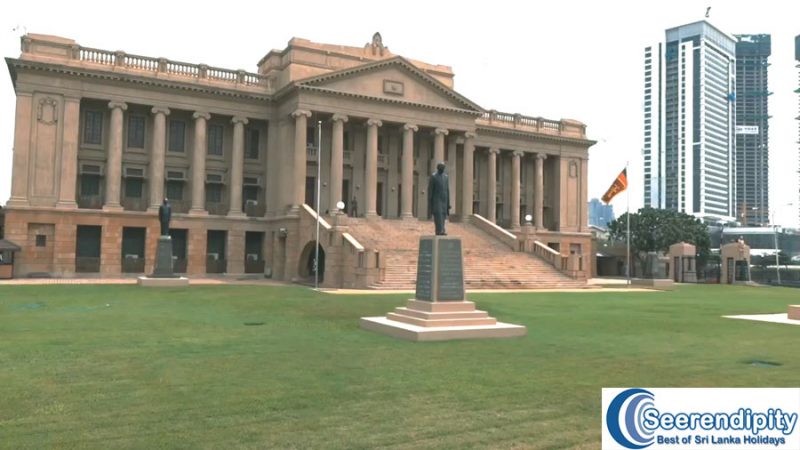13 Colombo Sri Lanka Point of Interest
When you drive in different parts of the country, you may come across places, where there are sites with some kind of importance, especially when you are on holidays or doing sightseeing tours. But you pass most of them unnoticed because you have no idea about what it is.
If you have a good idea about the places and their attractions that you come across along the way, then you can visit them and add more value to your journey. I thought of making this article under the heading of “Colombo Sri Lanka points of interest“, to enable you to get familiar with some of the places to visit in Colombo. In fact, we get a large number of emails with questions like “what are the Colombo Sri Lanka points of interest?” at the planning stage of many Sri Lanka tour packages, and if you are also planning to visit Colombo and contemplating what is the Colombo Sri Lanka points of interest, you are on the right track. Below description gives you an idea about some of the yet important Colombo Sri Lanka points of interest.
What are the 13 Colombo Sri Lanka Point of Interest?
- Colombo Fort
- President’s house
- Galle face green
- Slave Island
- Beira Lake
- Kelaniya Raja Maha Vihara
- Wolvendaal church
- Colombo Museum
- Hindu temple in Kompanna Vidiya
- Gangaramaya temple
- Viharamahadevi Park
- Clock tower- Colombo
- Marine drive beach or Colombo beach
Colombo city tour
Colombo city is the commercial hub of Sri Lanka and it is being visited by almost all holidaymakers in Sri Lanka. In fact, 90% of foreign travellers lands in Katrunayake international airport, just 30 km north of Colombo city. This historical city is beautiful and offers a large number of places to visit, therefore most tourists are not failing to add Colomb city to their bucket list.
Where is Colombo city
Colombo city is the most populated city in Sri Lanka and 2 million people are living in Colombo city. Colombo city is the capital hub of the island. Colombo city is a long narrow stretch of land located towards the western end of the island and stretches along the Indian ocean on the north-south axis. Colombo locates just 30 km from Colombo international airport and it is merely 20 minutes drive to reach from Katunayake.
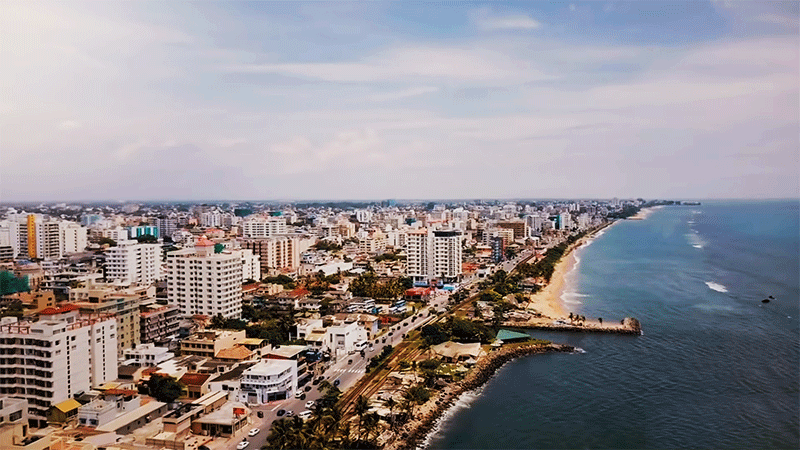
Colombo Fort
By far the most visited part of Colombo city. Originally it was another fortification like Galle, Matara, and Negombo built by colonial rulers in 1600s. Similar to most of the colonial building the fort of Colombo city was also destroyed during the last few centuries.
The fortification was initiated by Portuguese in 1551 and it was ceded to the Dutch in 1656. Small fortification during the Portuguese rule was widened and developed with enhanced security by the Dutch administration. The fortification was demolished by the British after 1815 in order to make room for the expanding economic activities in Colombo.
President’s house
This colonial mansion is one of the most important places in the city of Colomb city. The president’s house is situated in the fort area of the city. It was the living residence for a large number of state rulers including governors, presidents and prime ministers. The mansion is dating back to 1700s and houses a large number of antique furniture with high economic value.
The gigantic building of the Old parliament of Colombo city represents the classical Roman architecture. A large number of British architectures and Engineers has been employed for more than eight years to complete the construction. It is said a special variety of Granite stone was used for the construction of the building and it was transported from Yatederiya in Yatiyantota. The old parliament was slightly changed while it was reconstructed in 1948. The old parliament is one of the several best-preserved colonial buildings in the city of Colombo.
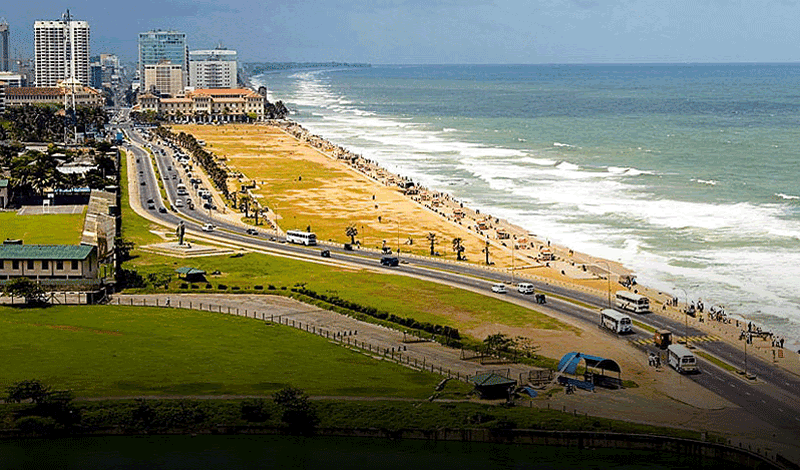
Galle face green
Galle face green is situated bordering the western border of the country. Initially, it was named after a Dutch word ‘’Goal pass” and the original name was changed to “Galle face” during the British rule. It was used as the execution ground during the Dutch period and it was used for horse races since 1840. It is functioning as a recreation ground since 1853 after the idea of Governor Henry Ward. This beautifully landscaped ground attracts a large number of city dwellers even today, especially on the weekends.
This has been an execution ground, where the soldiers of Dutch soldiers were executed in the 17’s. During the British occupation on the island, again it was used for executing British soldiers. For a brief period from 1840, it had been the racecourse in the city. Later it was turned into a recreation ground for the city dwellers after the idea of Governor Henry Ward. Today it is one of the popular places for the people of Sri Lanka. Open theatre is used for stage dramas; huge empty space provides ample space for relaxing, perform sports and jogging.
Slave Island
Slave Island or Colombo 2 is a busy commercial region in Colombo. This part of the city was named Slave Island by the British rulers owing to the slave uprising during the Dutch period in Sri Lanka.
It is recorded that 1600 “Kaffirs” were brought to the island by Portuguese from Goa. Even though the Portuguese used them as workmen, slaves were used for domestic work at the start of Dutch rule in Ceylon. Owing to the high population of Kaffir in the city, they have started a rebellion during the 18th century.
They had committed huge destruction for properties, streets even they killed employers. Killing the Dutch fiscal officer called Vanderstraaten and his wife was one tragic incident, which made the military to crush the rebellion. When the rebellion was crushed by the military, the slaves were imprisoned within the borders of the Slave Island. This incident considered as the reason for calling the region Slave Island.
Slave Island is located about 2 km south of the city centre (Pettah), next to Galle face green and towards the south of Slave Island is Beira Lake. Beira Lake was constructed during the Dutch rule in Sri Lanka in order to control the flood in the city. Initially, the area, where Slave Island is located had been a mud village with small bazaar, huge ground, and 2 villas. Slave Island is a part of Colombo, today it plays a big role as a part of Colombo. It contains government offices, shopping malls, restaurants, apartments, corporate offices, shops, cinemas, headquarters of Sri Lanka Army and Airforce with a busy road network.
The first reference to the area using the word “Slave Island” done by a Hollander called Francois Valentijn. The slaves were used to carrying water, firewood; they attended the janitorial works and other household works in the fort. During the day they attended the various tedious works and rowed to the slave island (the island which was surrounded by Beira Lake) after the work. Island was used by Hollander to hold the slaves in the night. Hollanders constructed the shanties for the slaves on the island and crocodiles were employed in the lake to stop slaves from being escaped.
Governor Stewart Mackenzie (1837-41) initiated to abolish the slavery in Sri Lanka and there is no existence of slavery on the island by 1845. Even though there is no slave in Slave Island old name being used to call this division of the city. After the abolishing the slavery, slaves were moved to other parts of the country and ancestors of slaves now can be found in Puttalam, Batticaloa and Trincomalee. They still perform Kaffringha popular dance related to the culture of the community.
Beira Lake-Colombo Sri Lanka points of interest
Beira Lake is undoubtedly one of the most scenic places in the city of Colombo, Sri Lanka. It is very suitable for an evening walk in Colombo. Unlike several years earlier, as the lake was polluted with industrial wastage and garbage, today the Lake is given a notable change in order to make it a beautiful place within the city.
Today there is no stinking water, discoloured water, algae, industrial wastage or dead fish floating on the lake. In Colombo, there are only a few such beautiful places to have a relaxation after spending many hours in the busy atmosphere. Most popular places for relaxation in Colombo are Galle face green and Viharamahadevi Park.
Beira Lake itself is more than two kilometres all the way around but it takes several hours to walk the entire distance The surrounding area of Lake is beautifully landscaped with a concrete paved passage for a walk.
Gigantic trees around the lake give you the freedom from the oppressive heat of the sun. And newly planted trees, plants and grass enhance the beauty of the surrounding. Most travellers who spend some time in Colombo ignore this beautiful corner of the city.
Where is Beira Lake in Colombo
Beira Lake is found in the Colombo2 or Kompanna Vidiya. Colombo2 is highly industrialized and one of the busiest parts of Colombo, it means everywhere you look from Beira Lake are high rise building with offices, shopping malls and factories. But the immediate surroundings of Beira Lake are amazingly calm and quiet.
There are several stops to make while you are on the walk around the lake. Simamalaka of Gangarama is the most important attraction in the Lake. It is a branch of Gangarama Buddhist temple. Simamalaka is a beautiful image house located within the borders of Beira Lake. It has a fascinating collection of Buddha statues, god figures, dagoba and a Bo-tree. A concert bridge is built to reach the temple from the main road.
History of Beira Lake
The history of Beira Lake is going back to 1600s when the lowland of Sri Lanka was dominated by Portuguese. The lake was mainly depending on Kolonna Oya for water. In the early 16’s Portuguese had decided to build a water ditch around the Portuguese fort in Colombo, in order to protect it from the forces of Kotte kingdom. Beira Lake came to be as a result of this Portuguese constructed ditch. Beira Lake is connected with the sea near the Galle face green.
Boating is a fun activity for most visitors of Beira Lake. It is possible to rent a beautifully designed pelican shaped rowing boats here. It could be a good idea to enjoy the cool breeze of the lake while feeding the Lake fish. The island in the middle of the lake is connected with the mainland with a modern bridge and you can spend some time in the island and have the opportunity to see several species of aquatic bird species such as cormorant and pelican
Beira Lake is one of the best places to relax and unwind spending several hours by water seeing the world go by. Colombo is an extremely busy place with a large population. Most travellers visit the city to enjoy the historical and shopping area of Colombo and a place like Beira Lake is definitely a good place for the travellers for relaxation and stress relief, when they visit the commercial centre of the island.
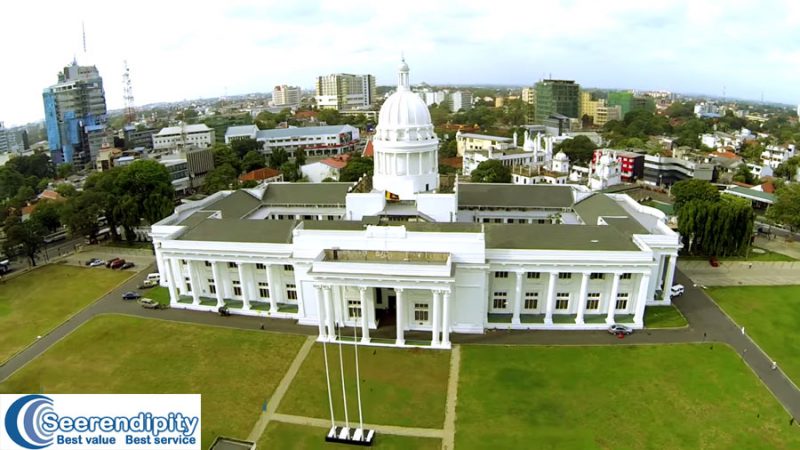
History of Beira Lake
Historical evidence suggests that Beira lakeshore was used as an open theatre. The name Beira Lake suppose to be derived from De Beer, De Beer had been the engineer in charge of the Dutch water defences. Some people opine that was name as a Portuguese engineer named Beira, who supposed to be discovered the lake nearly 480 years ago.
Kelaniya Raja Maha Vihara
Kelaniya Raja Maha Vihara is the most ancient temple in Colombo city. It is one of most sacred Buddhist temples in the island and dating back to 6th century BC. The temple is picturesquely situated bordering the Kelaniya River.
Even though it is situated in the most populated city in the country, well-maintained garden and the surrounding area is full of tropical vegetation, making it a place with natural beauty. The wall paintings of Kelaniya are perhaps the best modern temple paintings in the country. You might need a lot of time to enjoy the beautiful paintings temple but with the limited time, you can have a brief look at the exquisite paintings.
Wolvendaal church-Colombo Sri Lanka points of interest
Wolvendaal is the name derived from the Portuguese term “agoa deloupe”, which was used to call the area, where the church stands today. The area was appropriately named as “agoa deloupe” means the “dale of wolves” due to wandering wolves in early days. These “wolves” have now been identified as nothing more formidable than the packs of jackals that abounded in the Kotahena area.
The St.francis Roman Catholic church, which was built at the site of present Janadhipathi Manadiraya of Janadhipathi Mawatha by Portuguese, was demolished in 1813. The Wolvendaal church was built in 1749 and remains on the tombstone of prominent Dutchmen of the demolished church were relocated in 1813.
The church was built by the Dutch East Indian company. It is the oldest Protestant church in the island after Galle and Matara Dutch reformed churches. It has taken more than eight years to complete the constructions of the church. It was ceremonially opened on 6th March 1757 and the first public worship was conducted by Rev.Mathias wirmelskircker. The church has the seating capacity of 1000 people.
One of the most valuable treasures in the church is the antique furniture built with very valuable woods such as ebony. It has a remarkable collection of carpentry work with beautiful intricate carvings, dating back to the 17th and 18th centuries. The inner wall of the church is beautifully decorated with mural tablets of varying sizes. The floor of the church and several places in the garden is reserved for tombstones of those who were buried in the church.
Among the remains, there are remains of five Dutch governors. Tombstone of King Don Juan Dharmapala, who was converted to Roman Catholicism in 1550, was also among the tombstone. The tombstone of Don Juan was at the church till 1766 but later it was removed from the site. Few letters on the gable JVSVG of the Church associated with Governor Julius Valentyn Stein Van Gollenesse, the governor of Ceylon from 1743 to 1751.
One important incident that took place in the modern era is the attendance of Hon D.S.Senanayake in the church service in 1948. After the inaugural Independence Day celebration in Torinton square, held on 4th February 1948, Hon.D.S Senanayake was presented at the special service “independence day service” at Wolvendaal church.
The church is beautifully located on the Wolvendaal hillock, enabling the panoramic view over the Colombo Harbor. The church is built after the Doric style, in the form of Greek cross. The walls of the gigantic building are five feet thick, with gable raised over. The transepts are roofed with bricks and have barrel arches and central dome. The weathercock once stood on the roof of the dome was destroyed in 1856 by the lightning. Later the weathercock, which can be seen today, was recreated with an iron covering.
The wolvendaal church is one of the places to visit in Colombo and has a valuable archaeological and historical background. It is protected under the antique ordinance of the democratic socialistic Republic of Sri Lanka. The church is still function as a religious centre attracting faithful from the suburb. The service is conducted in all major languages (Sinhalese, Tamil and English). Wolvendaal church is one of the most important attractions in Colombo city. The people who are on holiday are not forgetting to see this rare architectural asset of Colombo city. The church is open for visitors throughout the week except during the service.
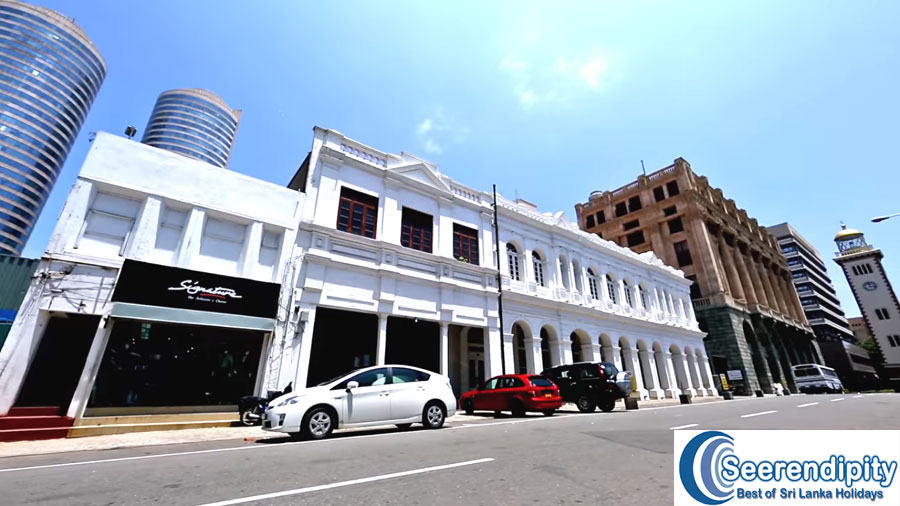
Colombo Museum
This is one of the important places to visit in Colombo if you wish to learn the history of Sri Lanka. Sri Lanka is one of the few countries in the world with uninterrupted human occupation since the pre-Christian era. The museum is housed in a colonial-style palace dating back to 1800s. A large number of artefacts can be seen at the museum.
Some of the valuable artefacts are dating back to hundreds of thousands of years and discovered during the excavations in the archaeological sites. Other than the historical artefacts it showcases the items related to arts and crafts, music, dancing, politics, ancient industries, Buddhism, trade, colonial influence and international relations.
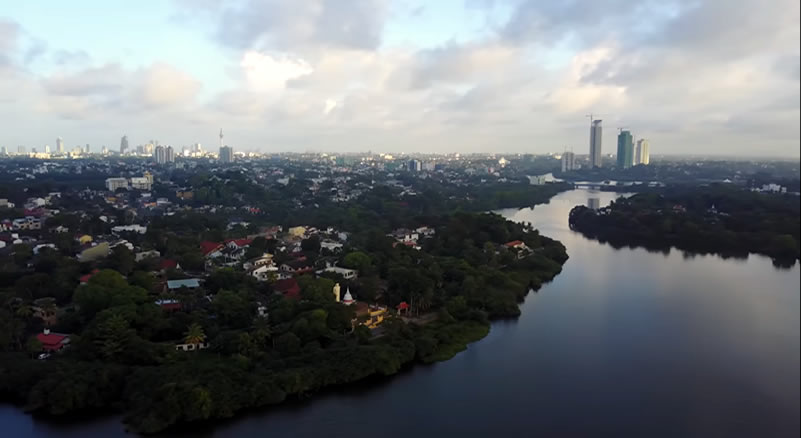
Hindu temple in Kompanna Vidiya
This is one of the most important places to visit in Colombo and visited by a large number of Hindu devotees live in Colombo city. The number of places to visit in Colombo for Hindu devotees is limited and most of Hindu religious sites concentrated in the northern and eastern part of the island. It can be found with ease due to the closeness to the city centre. The temple is dating back to 1800s and attributed to the Hindu soldiers of the British Ceylon army.
Gangaramaya temple-Colombo Sri Lanka points of interest
Gangarama is the most popular Buddhist temple in the city of Colombo. The temple is picturesquely located in the middle of the Baire Lake. It houses a number of Buddha statues, Bo-tree and Stupa. Don’t forget to remove your shoes before entering the temple.
Viharamahadevi Park is located near Gangarama temple, which is one of the important places to visit in Colombo. This is a green attraction with a large stock of trees, plants and waterholes. Earlier it was known as Queen Vitoria Park because it was founded by the British. The park is well maintained by the authorities and attracts a large number of people every day. It can be described as the green oases in Colombo city. The park is full of trees, shrubs and grasslands for a relaxing walk.
Viharamahadevi Park-Colombo Sri Lanka points of interest
The Park was initially called Circular Park but later it was named after the queen of Victoria and became Queen Victoria Park. The official name of the place was further evolved and it is called Vihara Maha Devi Park at present. The park occupies more than 35 acres and located in the busiest part of the city. It adds natural beauty to the bustling city and resting place for the people of Colombo.
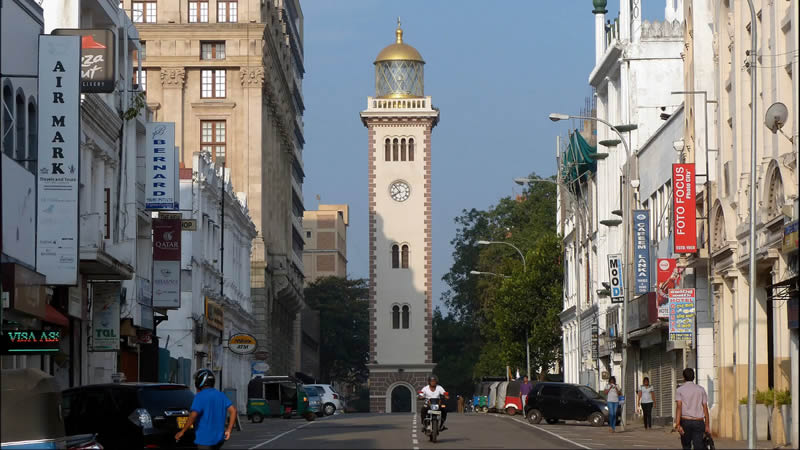
Clock tower- Colombo Sri Lanka points of interest
The giant clock tower is an important landmark in the city of Colombo and it is one of the important attractions in the city. The clock tower was originally designed by the wife of Governor Hendry Ward. The tower is multi-functional clock tower it is not only installed with a clock but also it functions as a lighthouse and alerts the ships passing by.
The clock tower is situated at the cross point of Queen street and Chatam street. This colonial construction was built during the British rule in Sri Lanka. Ninety-six feet tall clock tower was built after an idea of Mrs Ward (wife of Governor Henry ward).
The tower functioned as a clock tower as well as a lighthouse in the early days. But at present, it is being used for indicating the time. Measuring the distance from Colombo to any place in the country is starts from the clock tower.
Marine drive – Colombo Sri Lanka points of interest
Just a few kilometres from the central Colombo, the low-key neighbourhood marine drive feels a whole world away from the hustle and bustle of the busy street of downtown Colombo. It is an independent locality facing the Indian Ocean, just south of Colombo, in its own right until the late 1900s; this laidback suburb keeps the air of a multi-cultural, small-town community, and is today a famous haunt for local travellers.
With the rapid modernization of its infrastructure, the marine drive has become a place for leisure seekers. Large numbers of new, modern hotels line up the main road along with bars, cafeterias, restaurants, casinos, galleries, spas, night clubs, and many local eateries. Wander its modern street and you will mostly encounter local city dwellers and very few camera-wielding foreign tourists often plague other parts of Colombo.

